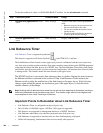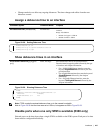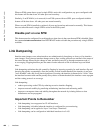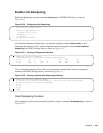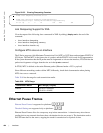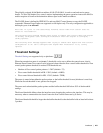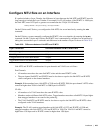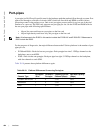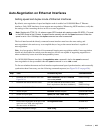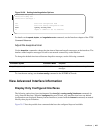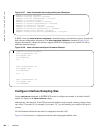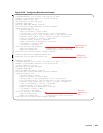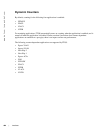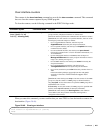
454 | Interfaces
www.dell.com | support.dell.com
Port-pipes
A port pipe is a Dell Force10 specific term for the hardware path that packets follow through a system. Port
pipes travel through a collection of circuits (ASICs) built into line cards and RPMs on which various
processing events for the packets occur. One or two port pipes process traffic for a given set of physical
interfaces or a port-set. The E300 only supports one port pipe per slot. On the E1200 and E600 each slot
has two port pipes with following specifications:
• 48 port line rate cards have two port pipes on the line card
• 48 port high density cards have only one port pipe on the line card
For the purposes of diagnostics, the major difference between the E-Series platforms is the number of port
pipes per slot.
• E1200 and E600—Each slot has two port-pipes. Each portpipe has nine 3.125Gbps channels to the
backplane, one to each SFM.
• E300—Each slot has one portpipe. Each port-pipe has eight 3.125Gbps channels to the backplane,
with four channels to each SFM.
Table 20-10 presents these platform differences again.
Note: All references to the E1200 in this section include the E1200i-AC and E1200i-DC. References to
E600 include the E600i.
Table 20-10. Platform Differences Concerning Port-pipes
Chassis Type
Port-pipes
/ Slot
Channels /
Port-pipe
Capacity of Each
Channel (Gbps)
Raw Slot Capacity
(Gbps)
E1200/E1200i-AC/DC 2 9 3.125 56.25
E600/E600i 2 9 3.125 56.25
E300 1 8 3.125 25



